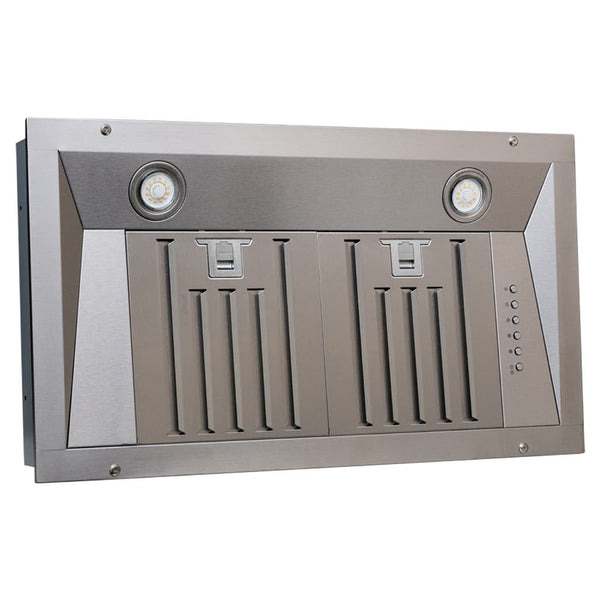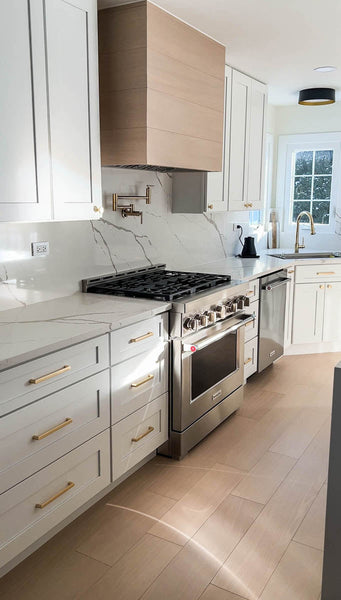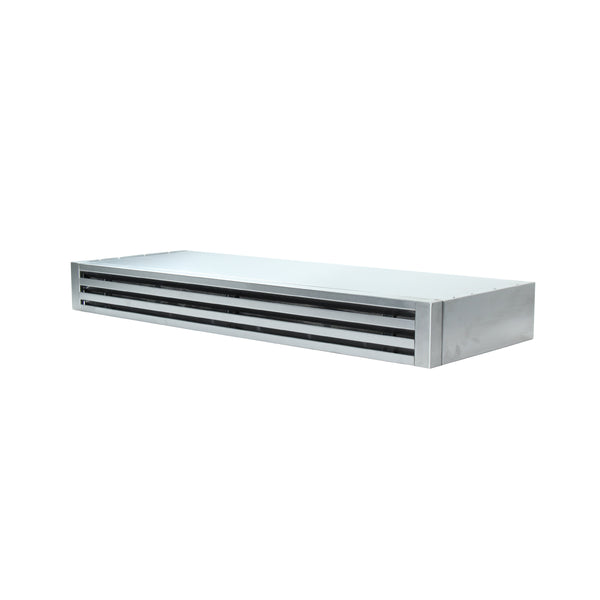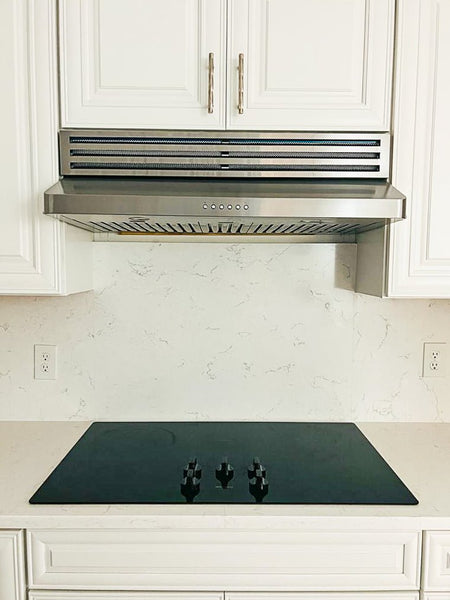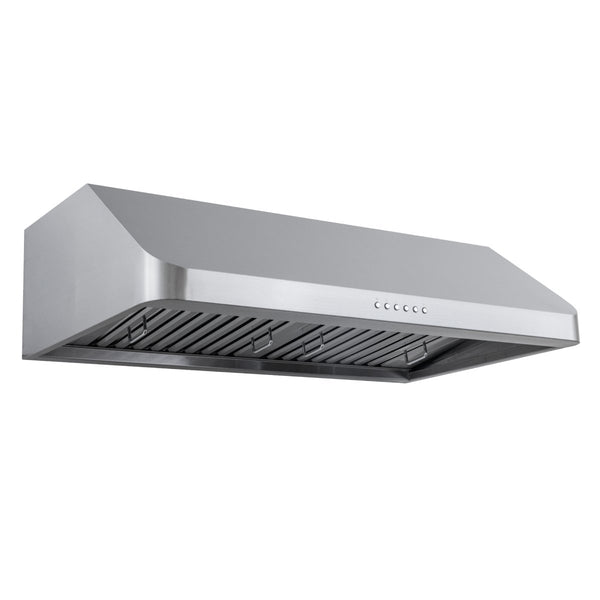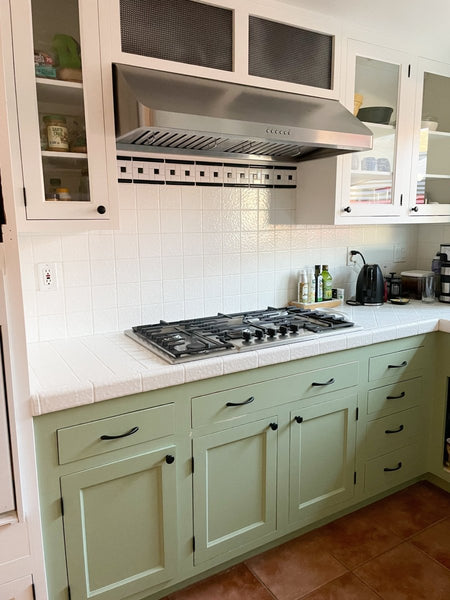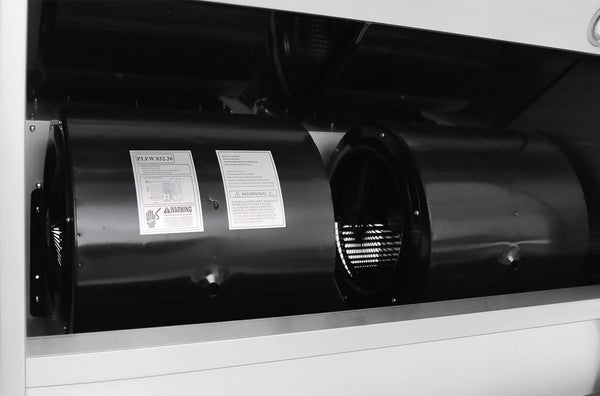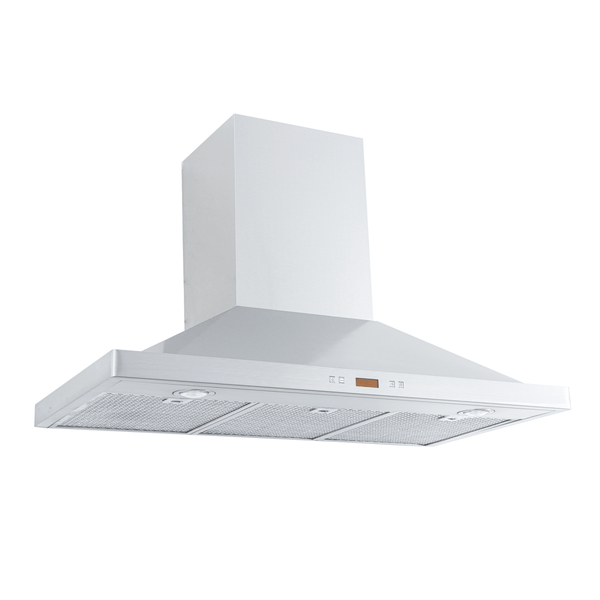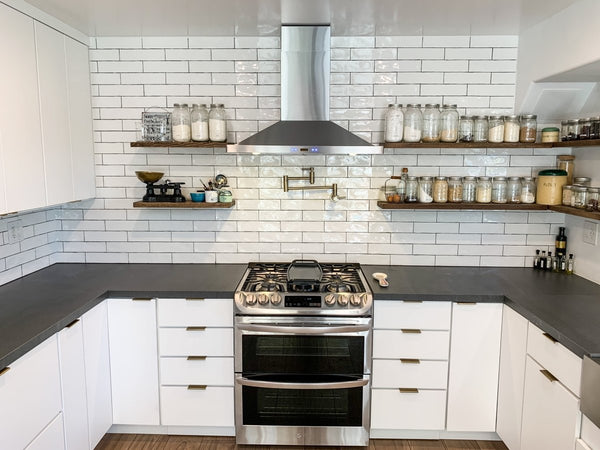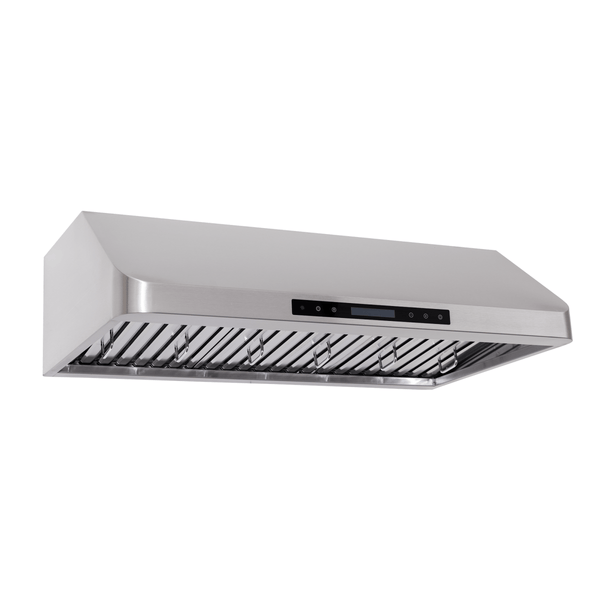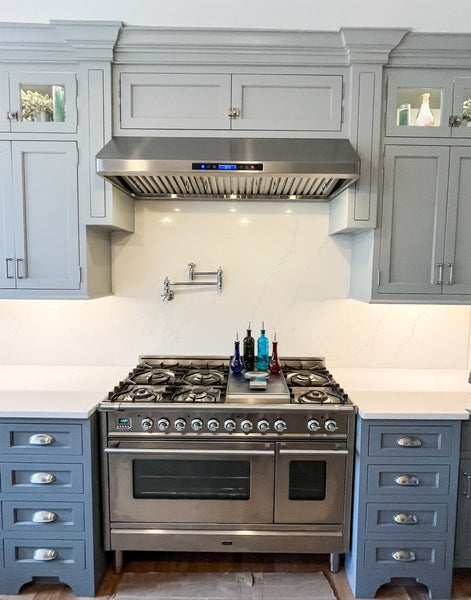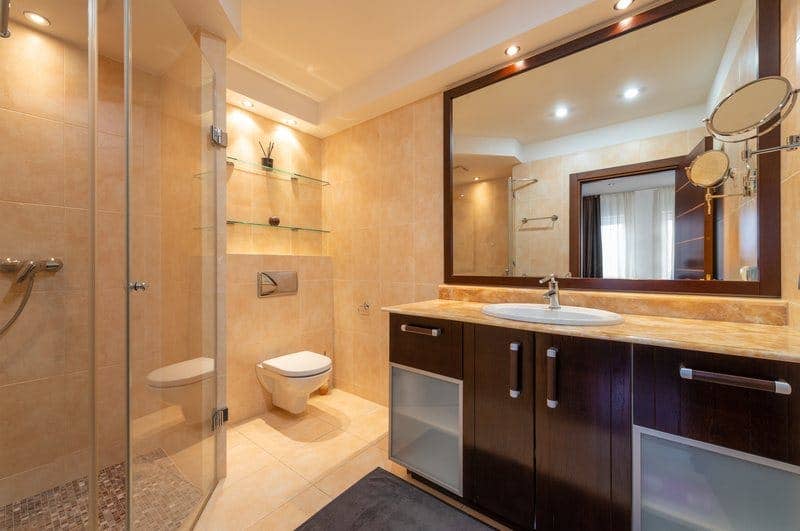Tiling a bathroom floor is an ambitious project for most homeowners. But it doesn’t have to be a daunting task.
In fact, if you’re new to laying tile, the bathroom is a great place to start. It’s not as ambitious as your kitchen. But, it does require good preparation and research. A little DIY experience doesn’t hurt, either.
The difficulty of your bathroom floor depends on its size and complexity. If you are tiling a small bathroom, it can take just one weekend. But if you are tiling a 100 square foot master bathroom, it can take several days. Consider hiring a professional if the project is too complex. Make sure that your subfloor is stable and in good condition before you begin to tile. Otherwise, the floor may become uneven and crack.
We’ll go over what you should consider before you tile your bathroom floor. Then we’ll discuss everything you need to know while you tile your bathroom floor.
Things to Consider Before You Tile a Bathroom Floor

Size and Complexity of Your Bathroom
Are you renovating a small bathroom? Is it a larger master bathroom? Or somewhere in the middle?
If you’ve never DIYed before, you may want to leave the larger bathroom to professionals.
Also, some bathrooms may have wall tiles or diagonal tiles, not just floor tiles. Wall and diagonal tiles are not trivial to cut and install. They can give beginners a headache. So, before you tackle tiling your bathroom floor, make sure you understand the scope of your project.
State of Your Subfloor
A subfloor is the foundation of your floor underneath the tiles. It supports the tiles and your weight. Most subfloors are made of plywood. One common exception to this is concrete slab floors, which can support themselves.
If your subfloor is damaged, you have to get that fixed before tiling. That is beyond the scope of this article, and you may want to bring in a professional to ensure it is done right.
So, how can you tell if your subfloor is damaged?
If your current floor is cracked or uneven, you might need to get your subfloor replaced. Water damage can also wear down the subfloor. A musty, damp smell is also a good indication that the subfloor needs to be replaced.
Time
The time for your project mainly depends on its size and complexity. Small bathrooms may take one weekend, while larger bathrooms or bathrooms with wall tiles or diagonal tiles can take several days.
Keep in mind that finding out what tools you need, gathering them, and preparing the bathroom will also take some time. You should be able to do all the prep in about a few hours.
Make sure to create a schedule and stick to it! Plan out every aspect of your project from research to installing the tiles themselves.
Budget

As far as cost goes, consider the cost of the tiles themselves and materials. The total cost depends on the size of the bathroom, how many materials you have already, the materials you want to use, and where you live.
For a 40 square foot bathroom, you will spend about $80 for the tile floor, or $2 per square foot. Most tiles cost around $2 per square foot. Marble and porcelain tiles tend to be more expensive than ceramic.
You’ll also need to pay for tools so you can complete the tiling successfully.
Tools include a tile cutter or angle grinder, mortar for the tile grout, a level, and a rubber mallet to fix the tiles in place. To spread thinset mortar, you’ll need a tile trowel, too.
Besides the tile cutter, these tools will cost about $50. A tile cutter can cost anywhere from $150 to $1000+. We don’t recommend buying a high-end tile cutter unless you plan on using the equipment often over the next several years.
Often hardware stores can rent you a tile cutter for the job. Some stores will cut tile for you cheap, or even for free.
If you DIY your bathroom tile floor yourself, you avoid the cost of labor, which is about $12 to $20+ per square foot. The labor cost comes out to about $500 (small bathrooms) to $2000 (large bathrooms) depending on the size of your bathroom and any extra features you’re adding. Contractors have all the tools they need so you wouldn’t need to invest extra money for those.
Can you use another bathroom during the project?
Use a second bathroom during your small renovation project, if possible. It’ll make managing the project easier since you don’t have to worry about people going in and out of the bathroom. Of course, if you live alone, you won’t have to worry much about foot traffic.
Do you have any help?
For a larger bathroom, it will go much quicker with a second person. Ask a friend if they can help for an afternoon and you’d be surprised how much work you could get done.
Small bathrooms are perfectly doable with one person, though. In fact, you might not be able to fit two people in the bathroom at the same time.
Get some advice from friends and family.
Have any of your friends or family tiled their bathroom floor? How did it go? What struggles did they have along the way? Was there anything they could have done differently to make the process smoother?
Compare rates of contractors in your area.
With any project, it’s good to compare the rates of contractors before you decide if DIYing is your best option. You might be able to get your bathroom floor done well at a low price.
If you’re only tiling one bathroom, hiring a professional can be well worth the cost. You won’t need to invest in the tools for the project.
So before you jump into the project headfirst, take a look at local contractors and request a few bids.
Yes, with enough time, you can lay tile just as well as a professional. But they’ll be able to lay tile in half the time you can, or even faster. Especially if you’re in a time crunch, don’t forget to consider hiring a contractor!
Amount of Tiles

You can either buy individual tiles or boxes of tiles. Buying boxes is much more reliable. It’s a pain to carry and store individual tiles. Not to mention they are more prone to breaking before installation.
For a bathroom floor, you might only need one or two boxes depending on their size. Most tile stores recommend buying about 10% more tiles than you need. That way, if you mess up some cuts, you can still finish the job without having to go to the tile store again.
Even for a small bathroom, buy a box of tiles if you can. It’ll make the job easier.
Tile boxes will include the total square footage that the tiles cover on the box. Divide that number by the total square footage of your bathroom.
For example, if your tile box says 10 square feet and your bathroom is 30 square feet, you will need 30/10 = 3 boxes.
If you buy individual tiles, they’ll have the length and width on a label. Multiply those to get the square inches that the tile covers.
For example, let’s say your tiles are 4 inches by 4 inches. That means they cover 4 x 4 = 16 square inches. Divide 16 by 144 to convert the answer to square feet. 16/144 = .11 square feet.
Then, take the square feet of your bathroom, 30 in this example, and divide it by .11.
30 / .11 = 272.7 tiles. So you’ll want 273 tiles for your bathroom.
Type of Tile
There are many different types of tiles, including ceramic, porcelain, stone, marble, and granite. Porcelain is undoubtedly the most popular choice because it is incredibly durable. But, ceramic and marble are also used quite often in today’s bathrooms.
Ceramic tiles are cheap relative to porcelain, marble, and granite tiles. They’re also quite durable and water-resistant but won’t keep heat very well. You may want to invest in a few bathroom rugs for the winter when the tiles will get quite cold.
Marble is another great option for tile flooring. Like ceramic tiles, marble tiles are exceptionally durable and waterproof. They are quite expensive, though. We recommend hiring a professional because making a mistake tiling your marble floor can be costly.
Things to Consider While Tiling a Bathroom Floor

Tile Cutting
This part of the project may sound the most daunting, especially if you’ve never cut tile before. But, luckily all you need is the right equipment and a little time.
A wet tile saw or angle grinder works great to cut tile smoothly. Tile saws can be quite expensive, so you might want to rent one from your local hardware store. Some stores may even offer to cut tile for you, which makes things pretty easy.
You might even be able to attend a class on tiling at your local hardware or building supplies store.
The video below has everything you’ll need to learn how to cut tile by yourself.
Type of Mortar
Before you lay your tiles, you need to purchase thinset which is a mixture of cement, sand, and water. This is the foundation for your new tiles.
They won’t lay right on your subfloor unless the subfloor is a concrete slab. So you need to put down an even layer of thinset before you can lay tiles.
Something like this premixed thinset from Amazon works great.
You can also mix your own if you’d like. Check out the video below to learn how. It’ll also show you how to apply the thinset quickly and easily. A tile trowel is an awesome tool to apply your thinset with no trouble. Try out this one from Amazon!
Tile Spacing
When installing tile, you’ll need tile spacers. Common sizes for tile spacers include 1/32, 1/16, ⅛, 3/16, and ¼. ⅛” spacers are standard for tile floors and 1/16” spacers are standard for walls.
It is crucial to space every bathroom tile evenly since you only get one try. If they are uneven after you install grout, you have to install new tiles entirely.
Here is a quick video showing you how to space your tiles correctly.
If you use tile spacers that are a little larger, between ⅛ and ¼, this gives you a higher margin of error. You can slide the tiles around a little easier if they are not spaced evenly. Check out more tips in the video below.
There are three types of tile spacers, X, T, and U or horseshoe. X-shaped spacers sit between four tiles, while T and U-shaped spacers are installed between two tiles. U-shaped spacers are great for walls because they won’t buckle under the weight of tiles.
Be sure to remove all tile spacers before you start adding grout. Grouting over spacers will look messy. It makes the grout more brittle as well.
Here’s some more advice on how to choose the right tile spacers.
You can find tile spacers of various sizes on Amazon.
Invest in some knee pads.
Knee pads are a must when installing tile. Of course, you don’t want to kneel on your newly applied thinset or newly installed tiles. But, with floor tiles, you’ll be on the ground the whole time. So, look for a pair of knee pads to make the job more comfortable.
Find comfortable and durable kneepads right here from Amazon.
Frequently Asked Questions
Is tiling easy to do yourself?
Tiling is a time-intensive DIY project. It’s not hard but it requires a lot of steps. It’s important that you lay the tiles evenly the first time because tiling is almost impossible to reverse if you make a mistake. You might be able to adjust some tiles slightly after they have set. But you don’t want to rely on this.
How long does it take to tile a bathroom floor?
A bathroom floor takes between two to three days (about six to eight hours per day) to tile for the average DIYer. The larger the bathroom, the longer it will take.
How much does it cost to tile a floor?
Tiling a floor costs anywhere from $1000 to $2000 for medium (70 sq. ft.) to large bathrooms (100+ sq. ft.) if you hire a professional. Some rates may be a little higher or lower depending on where you live and the size of your floor.
If you are tiling a floor yourself, you’ll need to invest in tools. If you rent an angle grinder or wet tile saw, this total can get down to around $100. The tile itself typically costs between $1 to $3, so that’s not a huge investment.
How much should it cost to retile a small bathroom?
A small bathroom costs around $500 to $600 to tile if you hire a professional. The cost per square foot is about $12.50 to $15 depending on the professional.
Can you lay tile and grout on the same day?
You can lay tile and grout on the same day if you use a rapid setting thinset. Rapid thinset adheres to the tile faster than standard thinset. With standard thinset, you need to wait 24 to 48 hours between tiling and grouting.
What happens if you walk on freshly laid tile?
The tiles will move around and your floor will become uneven. Never walk on freshly laid tile. Wait at least two to three days before you step on your new tile floor. This time may vary a little depending on the type of thinset used.
If in doubt, wait longer than three days. You don’t want to ruin your new floor and lose hours or even days of hard work.
Can I walk on the tile floor before grouting?
Yes, but it’s not recommended. You should wait at least 24 hours before walking on your tile floor. Walking on a tile floor before grouting may cause some dirt and debris to get between the tiles. You’ll have to clean that out before you grout. This just creates more work for you. So you’re better off grouting first before walking on the tile floor.
How long does it take for a tile floor to cure?
A tile floor takes about 24 to 48 hours to fully cure. If you step on tiles early, your floor may become uneven and the tiles will be moved around. So be sure to wait the recommended time before you walk on your tiles.
How soon after tiling can you grout?
If you use rapid thinset, you can grout on the same day you tile. Most rapid thinset cures in about four hours. But, with standard thinset, wait at least 24 hours before applying grout. If you’re a DIYer, it’s easier to use a standard thinset and wait for one to two days.
How much tile flooring can be laid in a day?
If it’s your first time laying tile, you can probably lay between 40 to 80 square feet in one day. The time it takes to lay tile depends on a number of factors: the size of the tile, the time you spend in the day, and prep work like gathering tools.
We hope you learned a lot about how to tile your bathroom floor. It’s not the easiest DIY task, but it can be done with some good research. Remember to compare the rates of contractors in your area if tiling your bathroom is too time-consuming or difficult for you.
Thanks for reading!
Related Articles
Whole Home Remodel - Where to Start
10 Kitchen Remodeling Tips for a Successful Project
90 Kitchen Renovation Questions to Jumpstart Your Remodel
